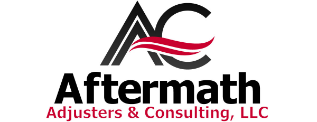It is not unusual for trees and branches to come down during a storm causing damage to your property. Thankfully, if you have a homeowner’s policy in effect, you may be able to get coverage for tree removal. However, not every policy is written the same way. That is why we at Aftermath Adjusters want to discuss homeowner’s policies and this coverage.
Read Your Policy
Since all policies are not written the same way, the best thing you can do is to read your policy to see what tree removal coverage is offered. Typically, you’ll find this in the section titled “Additional Coverages.” If you have tree removal coverage, it may be listed here. If you cannot find tree removal coverage listed, contact your agent for clarification.
Specific Tree Removal Terminology
Even if tree removal is listed, your policy may limit when they will pay for tree removal.
- Covered Structure: If damage occurs to a covered structure due to a falling tree, tree removal may be covered. Covered structures can include your home, garage, carport, outbuilding, fence, or deck. In this case, if a tree were to fall on one of these structures, then you would have coverage to have it removed. On the other hand, if it fell on the ground without damaging a structure, then you would not have coverage.
- Covered Property: If damage occurs to covered property due to a falling tree, tree removal may be covered. This is a better coverage to have. Why? Because anything on your property is covered. This can be anything such as grass, shrubs, a swing set, a grill, yard toys, or a bird bath. If a tree falls onto property that is covered by insurance, then you have coverage.
This is true for branches as well as entire trees. Branches that damage a structure can be removed with structure coverage. Branches that damage property can be removed with property coverage.
Coverage Limits
Most tree removal coverage has coverage limits. Policies typically pay between $500 and $1,000 per incident no matter how many trees were involved.
However, the cap is simply about removal, so make sure that the tree company lists out individual costs. Your insurance company will pay to take the tree off of covered property with the regular deductible. Then, they will pay up to the limit to have the tree removed.
For example, if a tree company is going to charge $2,000 to take a tree off your roof and fence, the invoice could look like this:
- $1000 – Remove tree from roof
- $500 – Remove tree from fence
- $500 – Remove tree from premises
In this way, the insurance company will pay $1500 to remove the tree from covered property and $500 for tree removal.
If you have had a tree fall on your property, make sure you know what coverage you have and pay close attention to the terminology. Feel free to call Aftermath Adjusters & Consulting, LLC if you would like to have a homeowner’s policy review. We’d love to help you understand your coverage.









